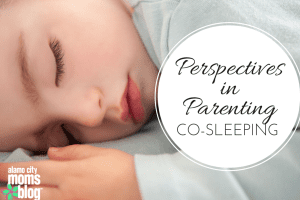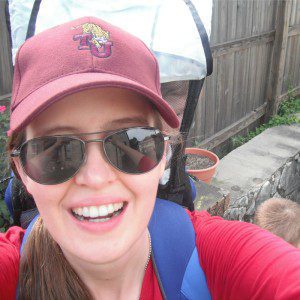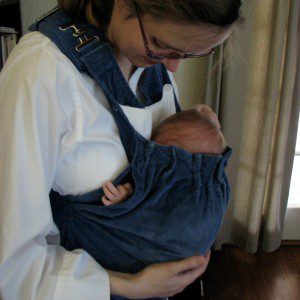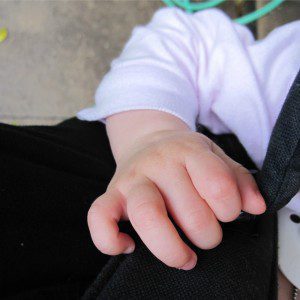Motherhood comes with a host of choices to make about what is best for you, your family, and your child. We at Alamo City Moms Blog have a variety of moms who want to embrace these choices instead of feeling guilty or judged for them! We are continuing our “Perspectives in Parenting” series with a look at the heated topic of sleeping. Two of our contributors will share their experiences of choosing whether or not to co-sleep. To view the other perspective, here’s Denise’s post.[hr]

I did not co-sleep or share a bed with my kids. I have two: my son, F.T., is seven now, and my daughter, G.N., is five. Even before F.T. was born, I knew I wanted him to sleep in his own bed as much as possible. I was concerned about Sudden Infant Death Syndrome (SIDS), but truly my biggest concerns were that having F.T. sleeping in my bed would make it hard for me to get enough sleep and harder for F.T. to learn to sleep on his own as he got older.
There’s always a gap between expectations and reality. In hindsight, though, I think I made the right decision not to co-sleep with my kids. By sharing my experiences as a well-meaning but sleep-deprived mom, I hope I can help other parents and their children improve their sleep quality.
Are co-sleeping and bed-sharing safe? Here’s how the American Academy of Pediatrics (AAP) defines co-sleeping:
Co-sleeping is when parent and infant sleep in close proximity (on the same surface or different surfaces) so as to be able to see, hear, and/or touch each other.
The AAP defines bed-sharing as a specific type of co-sleeping when the infant is sleeping on the same surface with another person.
Regarding co-sleeping and the risk of SIDS, the AAP recommends that the arrangement of room-sharing without bed-sharing, or having the infant sleep in the parents’ room but on a separate sleep surface (crib or similar surface) close to the parents’ bed.
When my kids were very young, we lived in a bungalow-style house; the master bedroom and the nursery were connected by a door that, frankly, didn’t shut because the house was crooked. If your house has a master bedroom and nursery farther apart, I would suggest keeping a bassinet in your bedroom for a few months and then moving your child to the nursery.
When it comes to SIDS, there are many risk factors, and lots of unanswered questions. Pediatricians are re-examining the risks of bed-sharing. Alamo City Moms Blog is a no-judgment zone, so I say: mamas, do whatcha gotta do. The risk of SIDS was a concern for me, but the main reason I chose not to share a bed was the goal of better sleep for me and my kids in the long run.
I’ve always been a light sleeper. Since becoming a mother, I have had to become more conscious and deliberate about good sleep habits. If I don’t take care of myself, I risk sliding back into depression.
Here are some good sleep tips that work for me:
- Wake up at about the same time every day.
- Get some sunshine, especially in the morning—a morning walk is ideal—and in the evening. After dinner, step outside to admire the sunset or pick some flowers.
- Work hard during your brain’s prime time (in the morning, for me), but don’t push yourself to make decisions or do detail-oriented work when you’re fatigued.
- After 3:00 P.M., no caffeine (coffee, tea, chocolate, etc.).
- In the evening, start turning off lights around the house. No loud music or TV.
- Stop worrying. Easier said than done, I know, but I try to jot down some notes and promise myself to deal with it tomorrow.
- Read before bed. I wish I could catch up on nonfiction or literature, but what works best for me is fantasy and science fiction. My current favorite series is Rucksack Universe by Anthony St. Clair, my talented cousin. I read on my phone, even though I know I’m not supposed to be looking at screens right before bed.
- If you do wake up at night, don’t get stuck in a cycle of worry. I prefer to get seven to eight hours of sleep per night, but I know I can function on four to six hours for a day or two. I just pick up my e-book again and read until I get sleepy.
For more in-depth advice, a good book is Say Good Night to Insomnia by Dr. Gregg D. Jacobs. Or, ask your doctor.
Sometimes, I break my own rules, but it’s for a good cause: date night with my husband; a night at the San Antonio Symphony or a summer blockbuster action movie; a Girls’ Night Out; a big idea I have to get on paper; a book I just can’t put down. As long as I don’t do it too often, I’m OK.
As a light sleeper, how did I manage with young infants, who wake up several times a night for feedings and diaper changes? Truly, I was severely sleep deprived for the first several months. It’s sort of a blur, but I have the feeling that things got better by the three-month mark. By the time each kid hit the one-year mark, I was starting to feel somewhat normal again.
Both F.T. and G.N. needed a lot of contact comfort. F.T.’s favorite was a vintage baby carrier, made of blue cotton wide-wale corduroy, that my mom used when I was an infant.
After G.N. was born, she wanted to be carried, too. A Baby Björn worked well for a while, and then a Kelty frame backpack. We were always on the move, sometimes walking, sometimes at a flat run, keeping up with F.T. at the San Antonio Botanical Garden or the children’s museum.
It would have been easier on me if my kids could have sat and played more, or slept in cribs or playpens more. But they are the way they are; they needed a mother’s touch. I wanted them to be safe and happy, so I carried them a lot. It was worth it to me.
Right from the beginning, I tried to make choices that would help my kids develop good sleep habits in the long run. Every child is different, but here are some things that worked for me.
Newborns need so much support: feeding, changing, calming. Swaddling helps, especially with those oversized, gauzy blankets. There’s no magic technique, but I experimented with lots of ways to sooth and shush my babies to help them get to sleep.
Sometimes, I would let my babies cry it out, but under these conditions:
- I knew (mama sense) they really were tired.
- I fed, changed, swaddled, and calmed them first.
- If they were still crying after a couple of minutes, I checked on them and repeated the swaddling/calming protocol.
- If, after all that, they were STILL crying and not sleeping, then I figured they were probably sick or teething, and all the sleep rules went out the window for a few days until they got better.
For toddlers, preschoolers, and school-age kids, my tips for helping kids sleep are similar to the ones I use for myself, with these additional tips:
- Stick to a daily routine. About once a week, we can go off-schedule for a movie night, dinner out, a party, to see fireflies or fireworks, etc.
- Get plenty of exercise every day. On rainy days, find an indoor place to play.
- The kitchen closes after dinner. Pretty much. Except for maybe a light snack at bedtime, after story time.
- No scary media or stressful experiences (e.g., tickle wars) too close to bedtime.

To reduce the risk of SIDS, the best practice appears to be letting your baby sleep on a separate surface, but in the same room as you or close enough that you can respond to his or her needs quickly. More broadly, I try to make decisions that will help my kids and me build good sleep habits that will boost our health and happiness in the long run. I hope you can find a safe sleep solution that works for your family.















[…] Two of our contributors will share their experiences of choosing whether or not to co-sleep. Click here for the another mom’s perspective about why she chooses not to […]